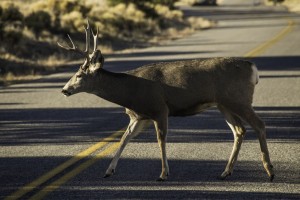 A collision with a deer can be deadly and/or painful. Just ask this teen, who was impaled by a deer while driving.
A collision with a deer can be deadly and/or painful. Just ask this teen, who was impaled by a deer while driving.
Even if you are not seriously injured, your car can be so badly damaged that you are stranded on the side of the road. It is not uncommon for collisions with deer to occur with no one around to help, out in the middle of nowhere, in an area that does not get cell phone service. While there is no way to guarantee that you will never hit a deer, there are some basic safety precautions that can minimize the risk.
- Know when and where deer are most likely to be present. Deer tend to be out around dusk and dawn, when they are most difficult for drivers to see. They may be out anytime of the day or night.
- If you see a deer crossing sign, take heed, but remember that lack of a sign doesn’t mean the deer won’t be there.
- Deer do hang out in urban areas in some places. They are not just out in rural areas and on back roads.
- If you see one deer, assume there are more close by. If you see a deer run across the road up ahead slow down. There may be more on the way, or the one that crossed may turn around and run right back across the way it came from.
- If you see deer peacefully munching by the side of the road, slow down and be wary. They can be unpredictable. It is not unusual for deer to get spooked by a car and run out in front of it.
- Brake, don’t swerve, and stay in your lane if you see a deer in the road. Swerving could land you off the road on in the oncoming lane of traffic.
- Honk your horn to scare the deer out of the road.
- Flash your lights to alert incoming drivers of a deer hazard that you have passed.















